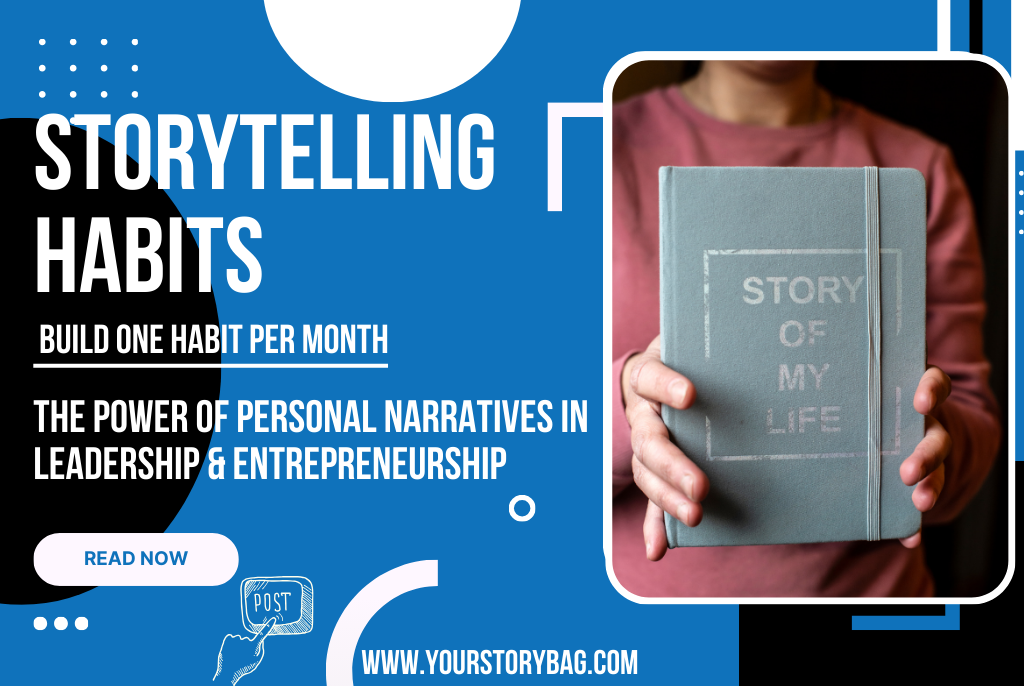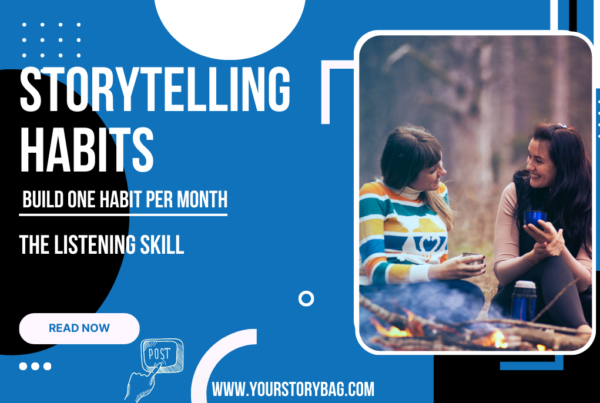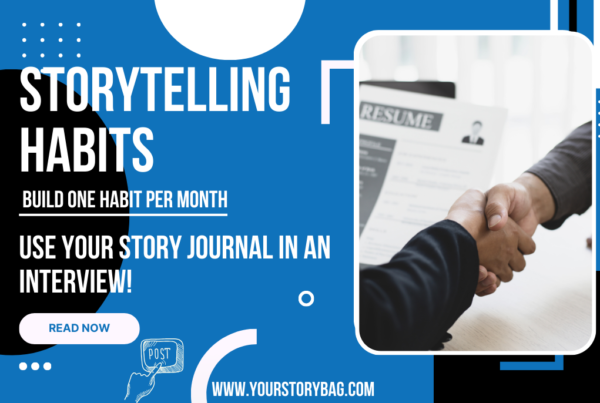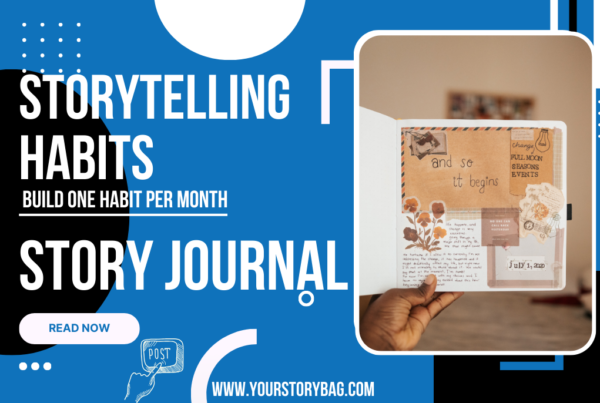
What happens to our stories when we don’t tell them?
We forget!
If you have been putting off the storytelling habit of journaling, then chances are that with each passing day, you are forgetting a part of the story.
Don’t trust me? Trust science!
makes some of our memories unreliable. When our mind forgets moments, we recreate it filling in the gaps. Some of those gaps could be imagined or borrowed images from other times.
The Hippocampus inside our brain weaves different parts of the story to make it one cohesive narrative memory.
Then, there is the that defines how we forget things we make no attempt to remember!
The truth is, that the more you delay storytelling, the more you forget! If you have not built your Storytelling Habit and started working on your storytelling muscles, then catching up with stories will get tiresome.
The good news is that you can start today! I will be your companion, and I am here to help you become a better, stronger, purposeful storyteller.
In the last couple of posts, I wrote about Story Journal and How to Use your Story Journal in an Interview.
The #PersonalStory is the easiest and most difficult to tell. It is easy because you own it. You don’t need permission to tell your own story, or share your perspective with the world. It is also a difficult story, because you are not sure if someone else will find it useful. If you are an ‘private person’, then telling your story gets doubly difficult!
The Personal Story is the single most powerful story that can help you build your credibility and connection with your listener. Now consider the listener to be someone in your team, or a customer / client. Let’s look at how your #PersonalNarrative can help you build genuine relationships and define the way you stand out in other people’s minds.
As a Story Coach, I work with Managers & Leaders, Entrepreneurs and Business Owners and in today’s post, I bring you best of tips that I share in my trainings.
Let’s go right in:

In an old post on LinkedIn, I had shared a route map to help you Lead, The Storied Way. Let’s look at how personal narratives can help you craft your leader persona.
- Be the Leader you want to Follow: Leadership is as much as looking ahead as it is about looking back. As you step into the shoes of a leader, pause to recall the kind of team member you were. What kind of a leader were you looking for? Who and what were you looking for when you were younger and more inexperienced? Did you find the right mentor? Or did you struggle under inappropriate bosses? Whatever be your story, lead with that…tell your leadership with the experience of being a follower / team member. The story of a good boss, the story of your early / learning days will set you on the path of being a leader who remembers how it starts for everyone.
- Bridge the Personal with the Organisational: As a leader you will be expected to talk about your business, the organisation or the company you lead. Tell your personal tale of how you found the bridge between your personal and organisational values? Share stories of how and when did you personally feel aligned to what your organisation believes in. These are stories that can be found in your interactions with clients, stakeholders, partners or colleagues.
- Past to Present to Future: You are a leader because you have the wisdom and experience. Use your personal narrative to share the wisdom of changing times, business scenarios, evolution of business and your personal growth story. Putting the past, present and future in a timeline of a story helps a mixed team to align with the steps they need to excel in the future.
- Ask for Stories: Most leaders forget this. Asking for stories is an excellent technique to give people the sense that they are seen and heard in the organisation. The personal narratives of your team helps create a sense of bonding, gives each member bring the best of their experience and create a new affiliation.
- Build Business Intelligence: Negotiations, Ideas, Creative Pitches, Strategies – almost everything that you and your team does is a story. Drawing out everyday business intelligence to create a robust knowledge management system is a remarkable way to harness the power of personal narratives that your team brings to you. Tomorrow, you will handover the team to someone else, or your team may evolve to bring in new people. Consider the immense pool of business intelligence that you can share.

Your Story brought the stories of Indian entrepreneurship to the forefront, but it was Shark Tank India that turned the spotlight on entrepreneurs in a reality TV format. Content on TV is driven by the metric of what makes for ‘good television’. Add the metrics of a business & irate investors in a mix and you have enough ingredients to make for compelling television.
Every business has a story of its own. In terms of businesses that I work with, I rarely see entrepreneurs leverage personal narratives in pitching their stories. The term ‘personal narrative’ within the entrepreneurship world, is more diverse than it literally means. Let’s see how:
- A Face for your Brand: Even the biggest global brands invest in brand ambassadors, actors, contemporary icons to give a face to the brand. When you show up using your product, delivering your service and telling the story of why do you do what you do, you become the face of your brand.
- Build a Personal Brand: Your business brand is and extension of your business brand. Your personal credibility, your values, your thought leadership, your expertise, knowledge and understanding of your domain builds your personal brand. While the #WHYStory is important, invest in telling stories that show people how are you different. A brand is NOT built by a singular story. Invest in the right stories that create a narrative of who you are and what you do.
- Ask for a Story: All businesses solve problems. The more you invest in personal narratives of your consumer / benefactor, the better your product becomes. If you are interested in people and their stories, you will find insights into how to make your product more attractive to them. By being the chief storyteller of your business, you are better able to connect with your customers at a more humane level.
- Sum of Parts: For most entrepreneurs, they want the world to know everything about their product while they protect their privacy. Someone may feel that their personal story is not important, while someone may think that it is intrusive. The truth is that as an entrepreneur, you are a sum of many parts. Your personal life, the experiences that you have, the networks that you build, the collaborations that you make are a reflection of who you are as a person. There are skills, personality traits, behaviours and hobbies that can help you build trust. Tell stories about the places you visit, the people you meet and the activities that your participate in.No, I am not asking you to share your coffee and meals on Instagram, talk about the steps you are talking to grow your awareness about the world your product works in. Invest in showing that part of you.
- Network / Collaborate / Grow: By now you know that the personal narrative builds trust. The more you tell you personal stories, the more you are able to build authentic relationships with people. By telling your personal story you are able to attract the right talent, build stronger networks and create sustainable growth opportunities through your interactions with investors, donors, funding agencies. Your customers begin to trust you because you are more visible, relatable & approachable.
In the next edition of the series Storytelling Habits, we will look at the Storytelling Habit of Listening. Yes, you read that right. Listening is more important than Storytelling!
Remember, we are building a habit, you have to find ways to build the muscle for continuous story work.






